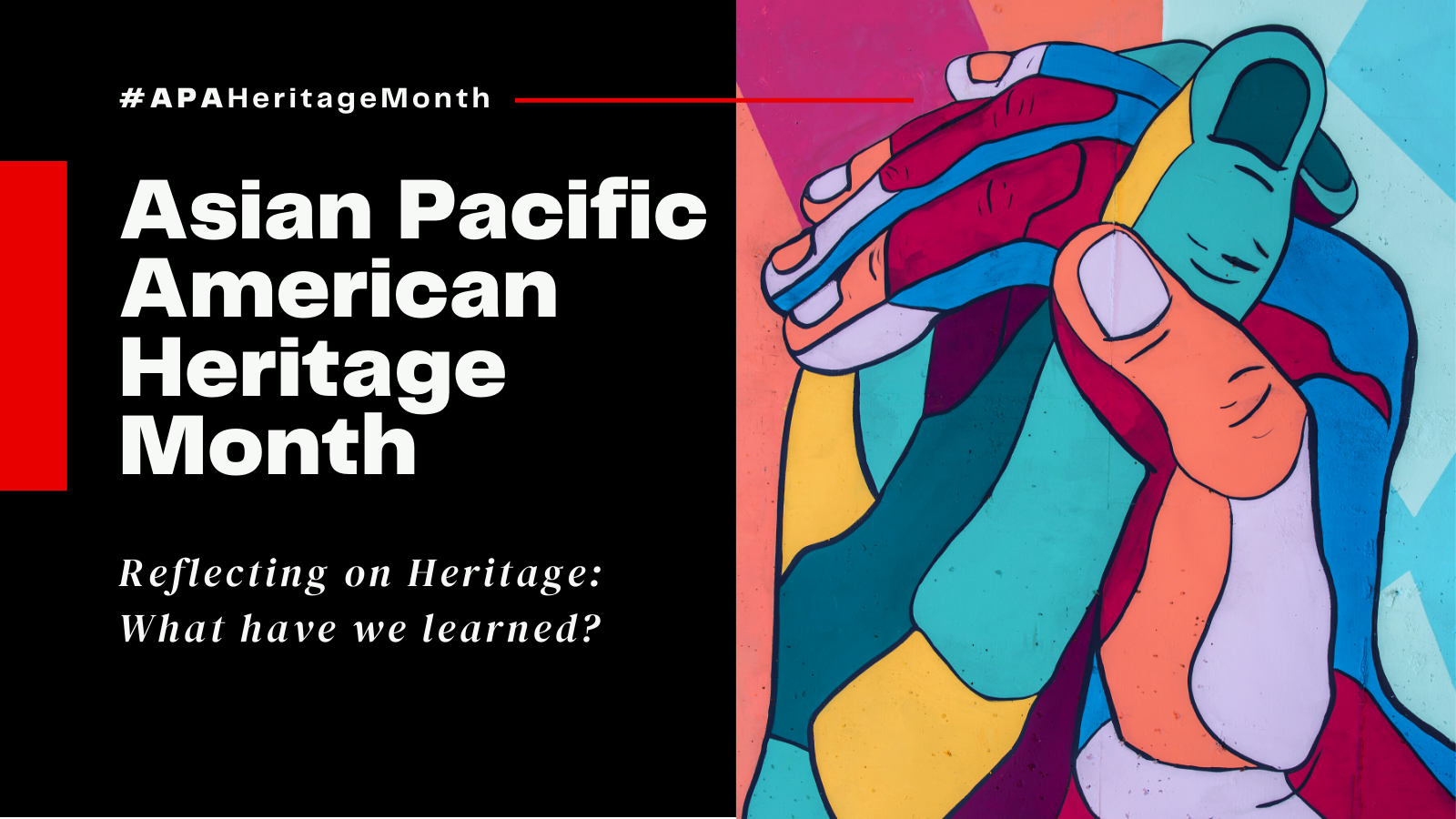Content warning: This blog post includes references to racially motivated violence directed toward Asian Americans and Pacific Islanders in the United States.
This year, for Asian/Pacific American Heritage Month, I reflect on the word, “heritage.” As Asian and Pacific Islander (API) people living in the United States, our individual histories are diverse, including multiple migrations and native indigenous experiences. We represent many ethnicities, as demonstrated in our diverse languages, religions, and cultural perspectives.
For some, but not all of us, our history is intertwined with the United States’ longstanding practice of engaging in labor exploitation: for example, those who migrated here from places like China, Japan, the Philippines, and Korea to work on farms, on plantations, in mines or sweatshops, and on the railroads. Many, such as Hawaiian and Samoan indigenous people, have inherited colonial legacies in which the United States played a role. Some of us migrated here electively, but not all. Many of us originate from countries deeply impacted by wars in which the United States had significant involvement—Vietnam, Cambodia, Laos, Korea, Afghanistan, Iraq, Japan, and the Philippines, to name a few.
We, and all people living in the United States, can also consider the heritage of student activism in 1968, a time when events like the San Francisco State Student Strike, the formation of the Asian American Political Alliance led by Emma Gee and Yuji Ichioka at the University of California at Berkeley, and the Third World Liberation Front coalesced people across Black, API, Chicanx, Latinx, Native American, and other identities for social justice. We can remember leaders who built alliances across oppressed ethnic groups, like Larry Itliong, the Filipino American labor leader who led the Agricultural Workers Organizing Committee’s grape strike in 1965 and later joined efforts with Cezar Chavez at United Farm Workers; and Yuri Kochiyama, a Japanese American who, after experiencing incarceration in camps in the United States during World War II, became in engaged in civil and human rights activism and joined Malcolm X’s Organization for Afro-American Unity. We can remember the activist, Corky Lee, who brought invisible histories into public consciousness through his photography.
The United States is grappling with a current wave of violent crimes against people perceived to be of that faceless, monolithic grouping: “Asian.” But this is not a new problem. We can recall the murder of Vincent Chin, the death of Private Danny Chen, the Waddell Buddhist Temple massacre of 1991, the Chinese Massacre of 1871, and the murder of Balbir Singh Sodhi, as well as too many more examples. This violence is our heritage, too—not just API heritage, but a legacy shared by us all. We can recall that people perceived to be “Asian” are among many individuals who have been harmed and killed due to race in our country and that there is no such thing as one death due to racism being more or less tragic than another. As the national conversation about race and justice continues in our present, I look back to some of the lessons from the generations before me.
Resources
- Iijima, C.K., Miyamoto, J.N., Chin, C. (1973). A Grain of Sand: Music for the Struggle of Asians in America. Paredon Records.
- Tachiki, A., Wong, E., Odo, F., Wong, B., eds. (1971). Roots: An Asian American Reader. The Regents of the University of California.
- Tajima-Peña, R. (2020). Asian Americans. Public Broadcasting Service.


